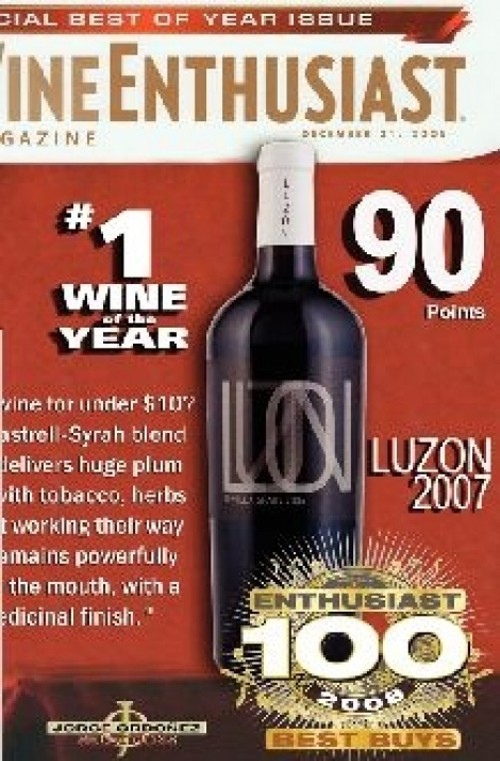Wine-Scoring Systems
Is the 100-pt. system destroying our own ability to evaluate wine?
By Louis KoppelThe ubiquitous wine score is a legitimate compass for the disoriented wine buyer. Whether it’s the cute little critters on labels, the convenience of a screw-cap, or a high rating, anything that aids in the purchase of wine is, I suppose, a good thing. It’s the number-chasing—score-whores and wineries crafting their wines to attain higher scores—that’s alarming.
Wine should convey a sense of place.
Whether it’s aromas of rose petals, high acid and tannin in a Italian Barolo, forest-floor aromas and a silky texture in Oregonian Pinot Noir or crisp white grapefruit and gooseberry aromas and flavors in New Zealand Sauvignon Blanc, wine should flaunt its own distinguishing character.
The wine critic’s score has become the glowing, blinking-neon sign buzzing in the eyes and ears of consumers and clouding the thought processes of winemakers. It’s scary to think how reliant we’ve become on a roomful of professional wine critics’ subjective, sensory evaluation and their resulting scores. A closer look at the tasting process might mitigate the effects of those dazzling, boldly printed scores.
Wine Spectator’s glossy, oversize magazine finds its way to 2.5 million readers every month. Lead tasters are assigned to specific regions that have become their specialty and niche. They taste 20 to 30 wines in each sitting. These tasting marathons aren’t as “blind” as they claim: The taster knows the vintage, varietal or region, knowledge that undoubtedly affects their assessment. They may also prime their palate with a benchmark, 90-point wine from that region as a reference point.
After the poetic notions of “blackberry, roasted cherry and hints of mineral and spice” are gargled, spit out and typed, the 50- to 100-point rating pops into the taster’s head. The effective difference between the 89-point “very good” bottle and the 90-point “outstanding” bottle is daunting. What the hell does a single point taste like anyway? Could the mediating factor have been the morning commute, the progression of the tasting, a personal preference or the company the wine was keeping? Or, most worrisome, could the winery have deliberately crafted its wine to garner higher scores from critics? The last-mentioned option could be the most consequential.
Enologix is a California-based wine-consulting firm that measures chemical components with mass spectrometers and liquid chromatographs to objectively assess the “stuffing” of high-scoring wines. For $20,000 a year, the company will assess wineries’ offerings and steer them into higher-scoring wine production methods—when to harvest, how much oak to use and so forth.
I hate to look a gift horse in the mouth, because it is technology that has brought wines from the pine-resin, spice-doctored, watered-down versions from long ago to the extraordinary storybook wines of today. The problem is that tasters’ objectivity is marred by the overzealous use of oak and super-ripe fruit; high-scoring wines are usually slutty, flattering, head-filling fruit bombs that stand out in any lineup. Most wines are assessed immediately upon release; the snapshot the taster gets shortchanges its potential and compatibility with food.
If every winery becomes compelled to feed the score-loving masses, we’ll wind up with a sea of homogenous, blond-haired, blue-eyed, big-bosomed clones of indistinguishable wines—a grim forecast for the future of wine.
Louis Koppel is sommelier at Spencer’s for Steaks & Chops.
Speaking of...
-
Broadway Deli, Yorkshire Pudding
A Yorkshire pud is simple to do yet hard to pull off, too often ending up an airless, stodgy accompaniment to the main fare.
- May 12, 2010
-
Good Day Cafe
Good Day for a Reuben: Good Day Cafe is unfancy from scratch.
- May 12, 2010
-
Utah Brew Pubs
Brews & Bites: 10 can’t-miss brewpub beer-and-grub pairings.
- May 12, 2010
- More »
More by Louis Koppel
-
The History & Buzz About Wine
A brief history of the nectar and our attraction to it.
- Sep 21, 2010
-
How to Decipher Wine Descriptions
Purple Prose & White Lies: How to unravel the tasting note.
- Aug 10, 2010
-
Wine & Wood
Get your mind out of the gutter; we’re talking about oak.
- May 25, 2010
- More »




